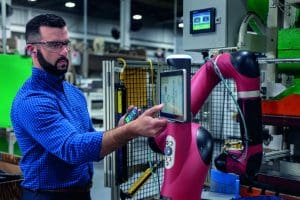In the current scheme of things, the dominant global players in the Operational technology (OT) space are all looking at growth by expanding their software capabilities – specifically to address the needs of asset intensive companies.
These are industries that are heavily reliant on performance efficiency of their assets; where any downtime translates to negative impact on the financial health of the business. Mining, Manufacturing and Utilities are some of the highly asset intensive industries that are responsible for asset linked business outcomes. Reduction in energy costs for example would be a tangible result area for business owners within these industries. Others include Oil & Gas, Telecom, Chemical and Transportation Industries.
30% or more efficiency gains with a BPM SoftwareWhere is the Value?
The idea of having one common ERP for all business processes is simply impractical – particularly in Industries that are asset intensive. The shifting trends and strong focus on Compliance, Risk Management and Mitigation translates to higher levels of process automation and drill down visibility. There is a need for mission critical and specific business function solutions that cannot be addressed by an ERP alone.
There needs to be a strategic shift to outcome based service oriented architecture.
*As per Gartner’s Michele Cantara, asset intensive companies are now revisiting their strategies to manage IT/OT convergence. These companies need to look beyond process control, asset utilization and waste reduction to understand how the behaviors of people, external systems and other “things” impact the business outcomes that rely on these assets. BPM software enables asset intensive organizations to link processes involving OT with business processes, to transform the way workers in the business use OT.
For example, in the manufacture of energy management devices, BPM software provides business-process-centric solutions to companies that want to reduce energy costs. OT/IoT monitoring of energy consumption provides insufficient visibility into how the actions of workers impacts energy costs. A BPM software solution with combined strengths in industrial automation system and BPMS would support all phases of the business process improvement life cycle and provide visibility on how work behaviors contribute to energy usage and cost.
Outcome of BPM Software in the scenario:
BPM software in connection with asset intensive industries also enables lower risk or risk mitigation along with higher levels of standardization. Business outcomes include improved visibility, process standardization and agile decision making – strong integration with existing software and systems also help achieve overall lower cost of ownership.
A classic representation would be to highlight the Fujirebio Diagnostics success story which revolves around implementation of equipment monitoring system based on Wonderware System Platform and Wonderware Skelta BPM software to ensure compliance for extensive reporting and documentation requirements from regulatory authorities.
Readers may access the complete success story of the integration capabilities of Wonderware Skelta BPM software with System Platform.



Conversation
Hi, thanks for the post, really interested as this is an area that I am particularly focussing on.
Just wondering if you could let me know a breakdown of the 29 respondents, i.e. How many of the 29 were Mining companies, and how many of these reported 20-30% improvements in process efficiency?
Regards Peter Powell
Sure Peter, I can pass on this information to you – no worries.
Kindly share your contact details (e-mail) and other social media handles (LinkedIn).
Regards,
Madhumita